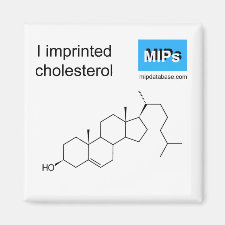
Authors: Ciardelli G, Montevecchi FM, Giusti P, Silvestri D, Morelli I, Cristallini C, Vozzi G
Publication date: 2006
Article title: Molecular imprinted nanostructures in biomedical applications.
Page numbers: 561-567
Alternative URL: http://catalog.asme.org/ConferencePublications/CDROM/2006_Proceedings_8th_Biennial.cfm
Publisher: American Society of Mechanical Engineers
City: New York
Volume number: 2006
Conference information: Proceedings of the 8th Biennial ASME Conference on Engineering Systems Design and Analysis
Abstract: Molecular imprinting is an emerging technology that allows to introduce nanostructured cavities into a polymer. In preparing molecular imprinted polymers (MIPs), the functional monomer(s) is first prearranged around the template molecule by specific interactions; the polymerisation is then carried out with a high percentage of cross-linking agent (which "freezes" the macromolecular network). Molecular mechanics and dynamics can be used to gain indications on the best monomers to be used in order to maximize interactions with the template. Once the polymerization reaction has been completed, the template is removed from the rigid three-dimensional network, leaving free recognition cavities available for the successive selective rebinding of the template itself. Precipitation polymerisation in dilute solutions involves the spontaneous formation of submicron scale polymer particles, which result suitable for recognition-rebinding application. Therapeutic applications: The recognition mechanism by MIPs relies mainly on the establishment of reversible hydrogen bonding interactions. It is clear that the efficiency of this mechanism is endangered in aqueous environments. MIPs working in water solutions are clearly of great interest in the medical and food industry and in sensor applications. We recently overcame these difficulties by the realisation of a system where cross-linked MI methylmethacrylate-methacrylic acid nanospheres where loaded on the surface or inside the matrix of porous membranes created by phase inversion. E.g. membranes were modified by adding cholesterol imprinted nanoparticles. Rebinding performances of nanoparticles modified membranes in buffer solution were tested showing a specific recognition of 14.09 mg of cholesterol/g of system (membrane and nanoparticles), indicating maintained binding capacity of supported particles as well. Tissue engineering: The engineering of functionalised polymeric structures for the study of cell activity is essential to the development of biological substitutes containing vital cells capable of regenerating or enhancing tissue function. Cells are organised within a complex matrix consisting of high molecular weight protein and polysaccharides known as the Extracellular Matrix (ECM). Two approaches are described to explore the possibility to provide scaffolds with specific and selective recognition of peptide sequences or proteins involved in cell adhesion mechanisms: one approach consists in the modification of porous structures with nanoparticles imprinted with aminoacid sequences (epitopes) of ECM proteins or transmembrane integrins, while the other consists in the combination of Soft Litography and Molecular Imprinting technologies (SOFT-MI). This technology allows to create imprinting nanocavities selective towards ECM proteins in microfabricated scaffolds, and in particular it permits to realise patterns with a well defined microscale geometry in polymethylmethacrylate (PMMA) scaffolds providing them with cell adhesion properties that were missing in the non-imprinted scaffold. Copyright ® 2006 by ASME
Template and target information: peptide, epitope, protein, Extracellular Matrix (ECM) protein, cholesterol



Join the Society for Molecular Imprinting

New items RSS feed
Sign-up for e-mail updates:
Choose between receiving an occasional newsletter or more frequent e-mail alerts.
Click here to go to the sign-up page.
Is your name elemental or peptidic? Enter your name and find out by clicking either of the buttons below!
Other products you may like:
 MIPdatabase
MIPdatabase









